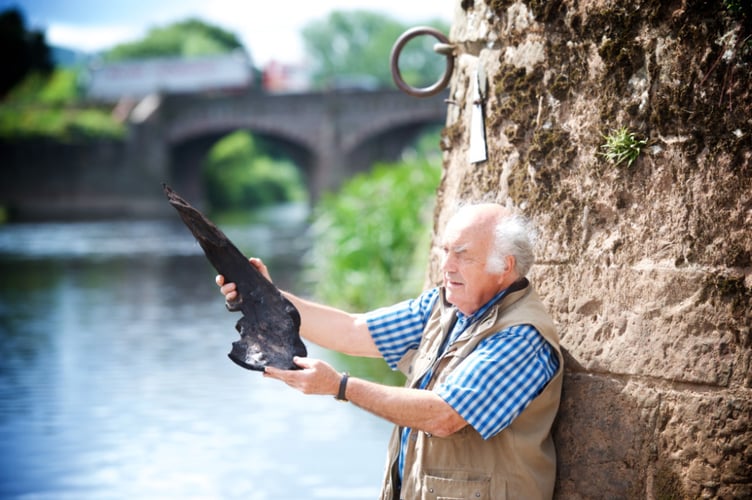Monmouth’s award-winning archaeologist Steve Clarke claims he has found the answer to a question which has always puzzled Mabinogion scholars - the site of the lost lake in the story of the desperate hunt of the ferocious boar, Twrch Trwyth.
Experts in the medieval Welsh tale about the lovers Culhwch and Olwen have long disagreed over the route Twrch Trwyth would have taken to the Severn estuary as the fearsome beast, pursued by King Arthur and his finest warriors, rampaged across Wales, plunging into a lake called Llyn Lliwan on the way.
The popular scholarly view is that Llyn Lliwan was a tidal lake on the banks of the Severn estuary that filled and emptied with the rush of the tides, as described in the Mabinogion tale.
"The game-changer," says Steve, "is our discovery that the spot where modern Monmouth sits was once covered by a lake created when Ice Age debris blocked the Wye gorge below Monmouth.
’’The lake lasted for thousands of years. It was tidal even in the ninth century when a monk called Nennius recorded the tide filling with a rush what was left of the lake. He called it one of the ’Wonders of Britain’. "
Archaeologists have found 5,000-year-old worked timbers and other signs of boat building proving the lost Monmouth lake saw intense Bronze Age and Iron Age activity.
Although little of the lake remained by the time the Mabinogion was written down, Steve makes the case in his just-published book, New Discoveries in the Land of King Arthur - the Legacy of Geoffrey of Monmouth, that the oral folk memory lived on and surfaced in the tale of Culhwch and Olwen
"The Mabinogion is a collection of tales handed down by ancient storytellers.
’’Our discovery that there really was a lake at the spot where Llyn Lliwan should logically have been, together with the personal evidence of Nennius, shows that the story in the Mabinogion embodies true folk memories going back many generations," says Steve, who was made an MBE for his award-winning archaeology.
He says the tale’s story about the knight Cacamwri being rescued from the Wye but "two millstones kept pulling him down into the depths" is more evidence of a Monmouth connection with the hunt for Twrch Trwyth.
"The Wye Valley just downstream of Monmouth was famous for making millstones - they were even exported to Europe.
’’Abandoned millstones are common in the woods and on the river bank.
’’The nearest real alternative source was in Derbyshire," he says.
New Discoveries in the Land of King Arthur - the Legacy of Geoffrey of Monmouth, by Stephen Clarke, is published by Town Wall Printers, St James’ Square, Monmouth NP25 3DN, £12 plus £2 p&p. Email [email protected]
The captions are Steve Clarke at the old Monmouth Quay on the Wye with a piece of 5,000-year-old worked timber, possibly from an Iron Age boat; and Steve studies archaeological remains in his workshop in Monmouth.

Comments
This article has no comments yet. Be the first to leave a comment.